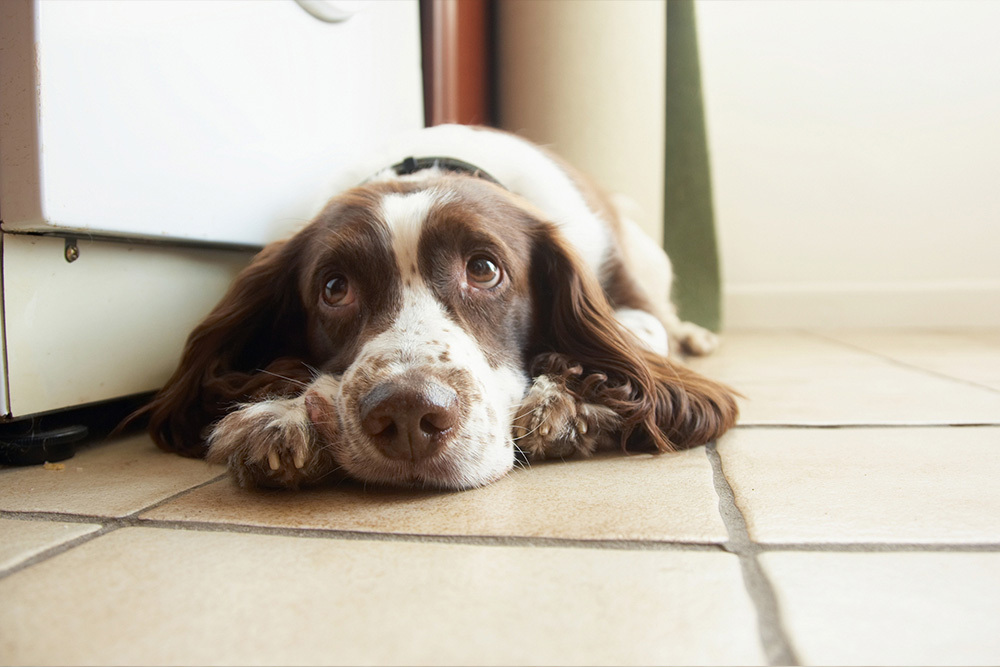Learn : Food Transition & Vomiting
The Dog Vomit Texture Guide
When your dog spits up, it’s only natural to feel some concern. Especially if it’s not a particularly common event in your four-legged household.
While your instinct may be to dial up the vet as quickly as you can, there are plenty of circumstances where some tender love and care will suffice as proper treatment. Knowing when to call the pros and when to wait it out could save you plenty of time, headache and unnecessary expenses.
Dog Vomit Texture, A Key Indicator
The texture of your dog’s vomit has a way of speaking for them when they’re feeling off. While dog vomit color is commonly thought of as the easiest way to gauge the situation, it’s an even better diagnostic tool when you consider texture.
By properly assessing dog vomit texture you can get a good idea of what’s going on in their gut — or elsewhere in their body. And as importantly, what isn’t.
My dog’s vomit is chunky…
It’s often something related to their food intake. Maybe you switched their diets without gradually transitioning. Maybe they ate too quickly.Maybe they simply ate something that didn’t quite sit right. If it’s a singular incident and your dog’s behavior seems normal, it shouldn’t be much to worry about.
My dog’s vomit is foamy or runny...
It could be a sign of inflammation in the gut, commonly known as gastroenteritis. It’s a good idea to get in contact with your vet, especially if their runny vomit persists over the course of the day and comes paired with diarrhea. Your vet may be able to prescribe medicines or courses of action to get them back on the mend quickly, and avoid potentially harmful or even fatal complications.
My dog’s vomit is thick and gooey…
It could be mucous, which is often a sign of regurgitation — a distinct reaction separate from vomiting. Regurgitation often occurs when a dog simply doesn’t digest a food item, and may appear like a simple burp after being rejected by their esophagus. It could be nothing: Think about the same way something might “go down the wrong pipe” when you’re eating or drinking. Of course, be wary of the mucus coughs continuing — it could be a sign of kennel cough, distemper or even a foreign object irritating their throat.
My dog’s vomit is grainy…
It could be blood. Examine the vomit closely, and if the grainy texture is accompanied by a dark brown color, get the attention of your vet immediately. Throwing up blood could be a sign of internal bleeding, stomach ulcers or other serious disorders.
My dog’s vomit is grassy...
You can probably put two and two together. Dogs love to nibble on grass (for reasons scientists don’t quite yet understand), and overconsumption can potentially stir up their gut.
If it’s just a little grass from your yard, it’s nothing to worry about. But there are exceptions: If you’ve recently treated your yard with pesticides or other chemicals, call your vet immediately. Same goes for any foreign plant material they may have consumed from around the house. Some plants are toxic to dogs, while others are perfectly benign.
Trust Your Vet
All of the above tips and insights apply to isolated vomiting incidents — if your dog is experiencing chronic or multiple vomiting episodes in quick succession, it’s time to call your vet regardless of the texture. Cancer, diabetes and other serious diseases may present themselves early through vomiting. It’s always better to be safe than sorry, so don’t hesitate to make the call if things feel truly abnormal.



 Dog Vomit — A Guide To The Yucky Stuff
Dog Vomit — A Guide To The Yucky Stuff
 Dog Vomit: A Color Guide
Dog Vomit: A Color Guide
 How to Induce Vomiting in Dogs
How to Induce Vomiting in Dogs